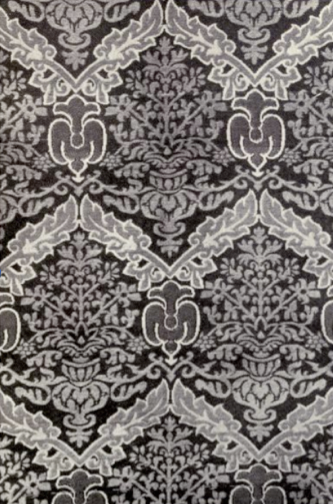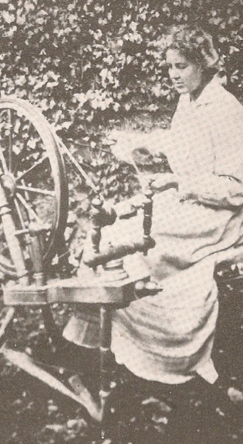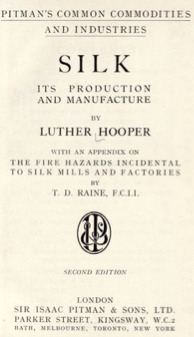
GREEN BUSHES WEAVING HOUSE
This plaque celebrates The Peasants’ Arts movement, a very specific branch of the Arts and Crafts movement around the turn of the 19th and 20th century. At its heart, the movement was an attempt to create a rustic renaissance, reawakening the artistic and craft traditions of the pre-industrial age. The movement’s central idea was to bring together craftsmen to recapture the simplicity of an earlier age. The movement began in 1894 when Maude Egerton King and her husband Joseph King moved from London to Witley. Maude began teaching local girls to weave in her house in Witley and presented her exhibits with the home arts and industries Association in 1895. Amongst her customers were the Princess of Wales and the Duke of York which no doubt helped to build an interest in her work. Joseph King, Maude’s husband must have been a wealthy man. Shortly before the exhibition, he had acquired a significant plot of land around Foundry Lane and employed an eminent architect Francis Troup to construct a number of residential and commercial buildings, each with a different craft focus. The Kings themselves moved to one of the houses with the idea to attract artisans who would create a community of craftsmen and women. Green Bushes, where the Haslemere Society plaque has been erected was to be a weaving house. 11 looms were set up in a house just opposite and next to this there was a tapestry studio where tapestries and rugs were made. The tapestry designer, Godfrey Blount lived in nearby Foundry cottage, an early 17th century farmhouse and it’s thought that Godfrey used Meadow cottage, the house next door, as a studio. At the end of Foundry Lane, Honey Hill was built to the design of a workman’s cottage, where the joint manager of The Weaving House lived. Further down the hill on Kings Road the distinctive black wooden building of The Dye House, today a residential property, was constructed. Given the number of apple trees that are still today in most of the gardens in the immediate area, it’s reasonable to assume there was also an orchard. The best known resident of Green Bushes was Luther Hooper, who lived in the house between 1902 and 1910. Hooper was a silk weaver, a collection of whose works is held by the V & A and regarded as being of the highest quality. He exhibited at the 1906 Arts and Crafts exhibition along with Romney Green, a furniture manufacturer also working in the Peasant Arts community. Hooper was also the author of a number of works on silk weaving some of which are still in print today and still used as instruction manuals for a new generation of weavers. St Christopher’s Church in Haslemere is widely regarded as a gem of the Arts and Crafts movement. Hooper produced the original silk alter curtains and wall hangings but sadly they are no longer there. At least one of them however is held by the Victorian & Albert Museum. Google Maps location - CLICK HERE Click here for the Haslemere Society Blue Plaque leaflet on Greenbushes. |
|
Location |
|



